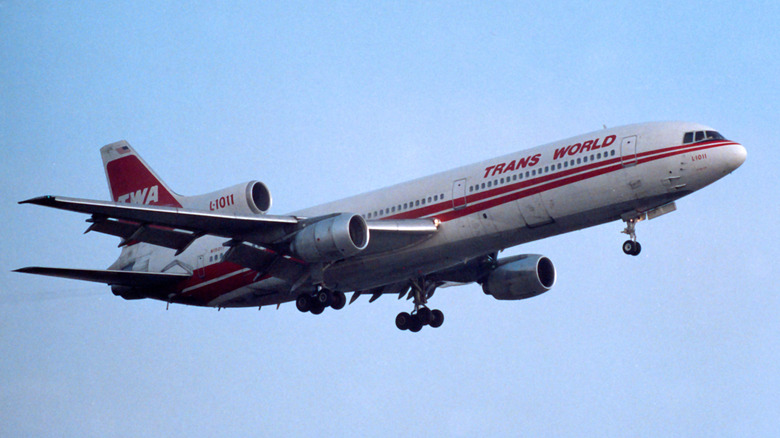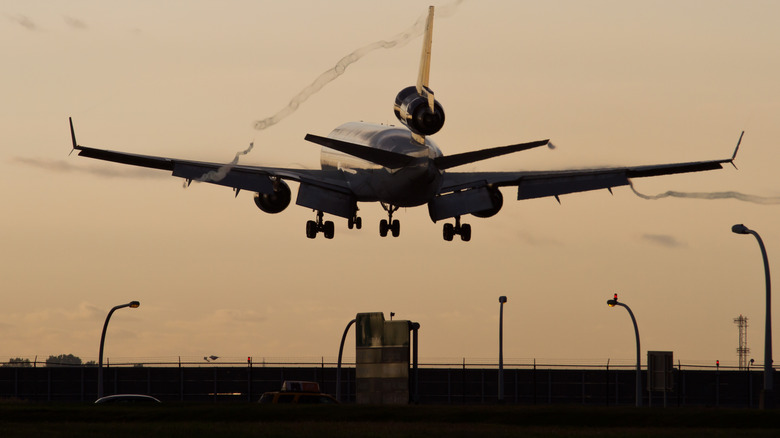Why Were Three-Engine Airliners Discontinued?
During the '60s, more and more people were clamoring to fly around the world than ever before. This led to innovations like the 747, the first twin-aisle aircraft. This bird was huge and ideal for lengthy international flights. However, for some destinations, four engines were too much and two were not enough. In the early '70s the skies saw something new in aviation, a three engine or "trijet" aircraft. With examples like the Lockheed L-1011 TriStar and McDonell Douglas DC-10, travelers noticed not only an engine under each wing but also one mounted to the center-rear where the tail was located. These weren't the only examples of the biggest Trijets to ever grace the skies. Others included the Hawker Siddeley Trident and the Boeing 727.
While the trijet continued to gain popularity, some of its shortcomings began to surface. From an airline's perspective, the engines are the most expensive part of the aircraft, both to purchase and maintain. So, when engine technology began to improve in terms of performance and efficiency, it signaled the end for the trijet. After all, from a business standpoint, why would you operate aircraft with three engines when a newer model with two can get the job done for less? However, that's not the whole story.
Airlines wanted trijets to skirt an aviation rule
With increased air traffic worldwide in the 1960s, two-engine aircraft were subject to restrictions under the Extended-Range Twin-Engine Operational Performance Standards (ETOPS). Basically, a jet with two-engines couldn't operate any further than 60-minutes from an alternate airport throughout its flight. This obviously posed a significant hurdle for those airlines with routes across the Atlantic.
However, if aircraft added a third engine, the restrictions didn't apply. This meant that trijets didn't have to hug the coast and could instead fly right over the ocean.
Fortunately, changes in the '90s began to ease this rule, with more capable and efficient two-engine jets able to fly further away from alternate airports. It also was devastating news for trijets, whose big advantage with regard to ETOPS ratings suddenly vanished. Modern planes qualify for much higher ETOPS ratings allowing for two-engine jets to complete transatlantic flights. In fact, if you're given the opportunity, the Airbus A350 jet is regarded as one of the best planes for long flights.
The advantages of trijets over two-engine aircraft
There are still a few benefits that trijets have over aircraft with fewer engines. For example, a third engine provides additional redundancy in the event of a failure. A two-engine passenger jet has only one means of thrust if one of the engines breaks down. Although it's important to note, a situation in which both engines on a two-engine aircraft fail is exceedingly rare. A turbine engine has a failure rate of around one for every 375,000 flight hours.
A study by Transportation Research Procedia, published via Science Direct, found that a third engine may indeed provide a better thrust to weight ratio. So, conceivably, a trijet may offer enhanced performance in circumstances where the runway is short.
Even though most of the large trijets have long left the skies, you can still find private models like the Dassault Falcon 8X, which comes equipped with three Pratt & Whitney PW307D engines. Speaking of the Falcon 8X, this trijet is one of the fastest private jets in the sky today.


